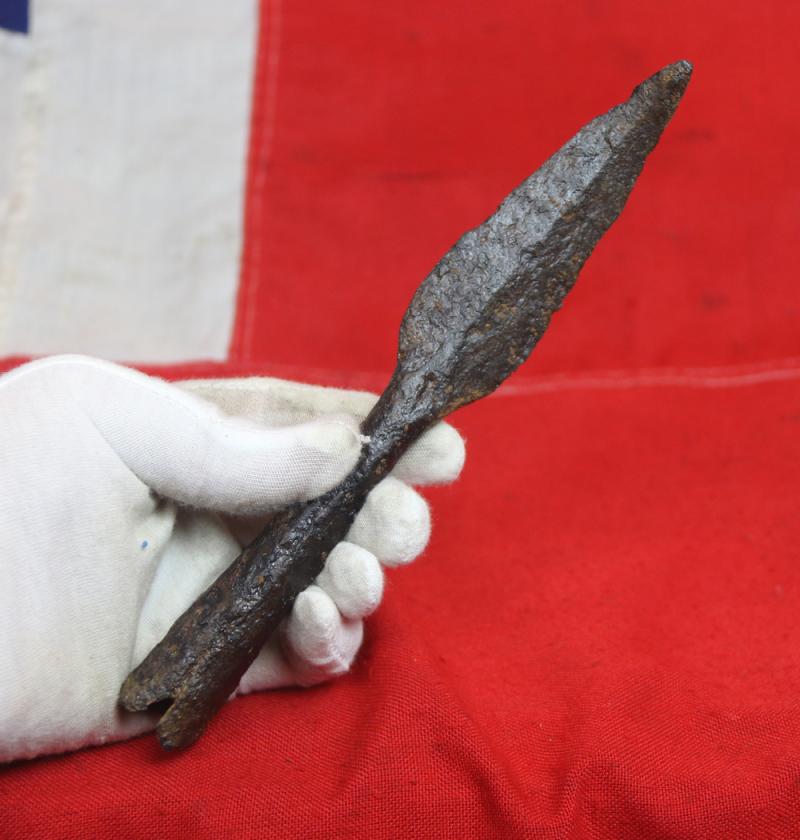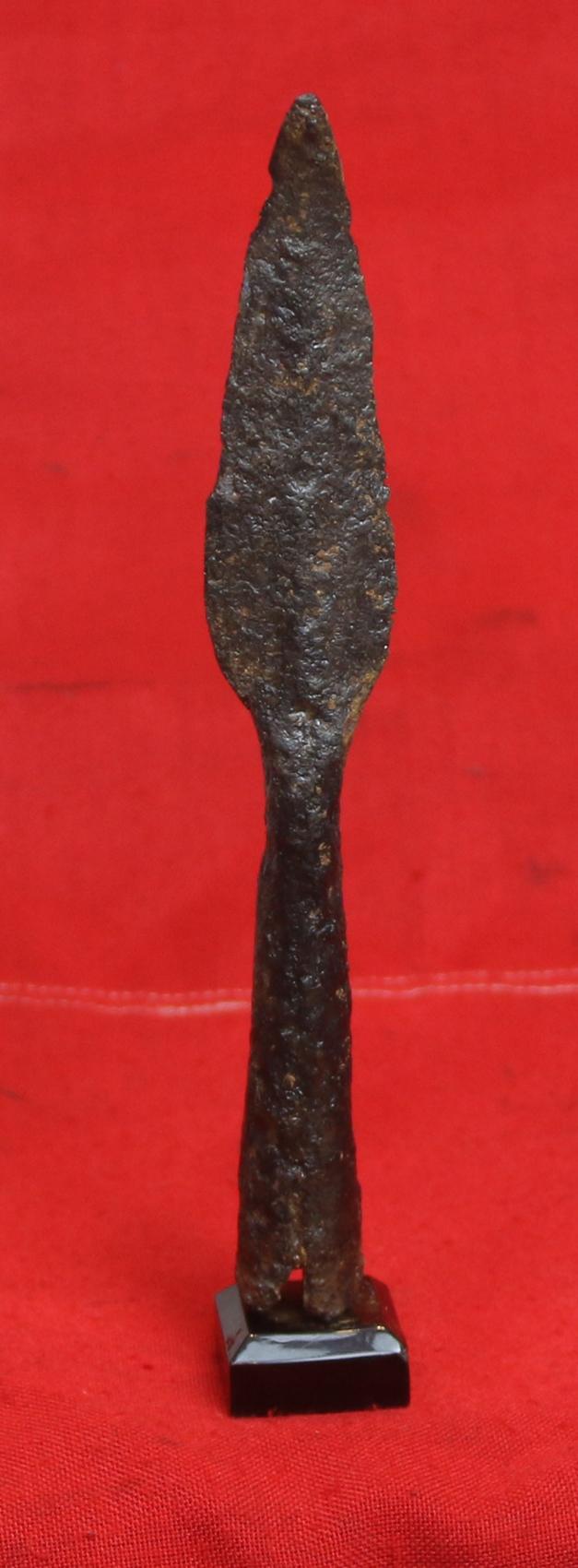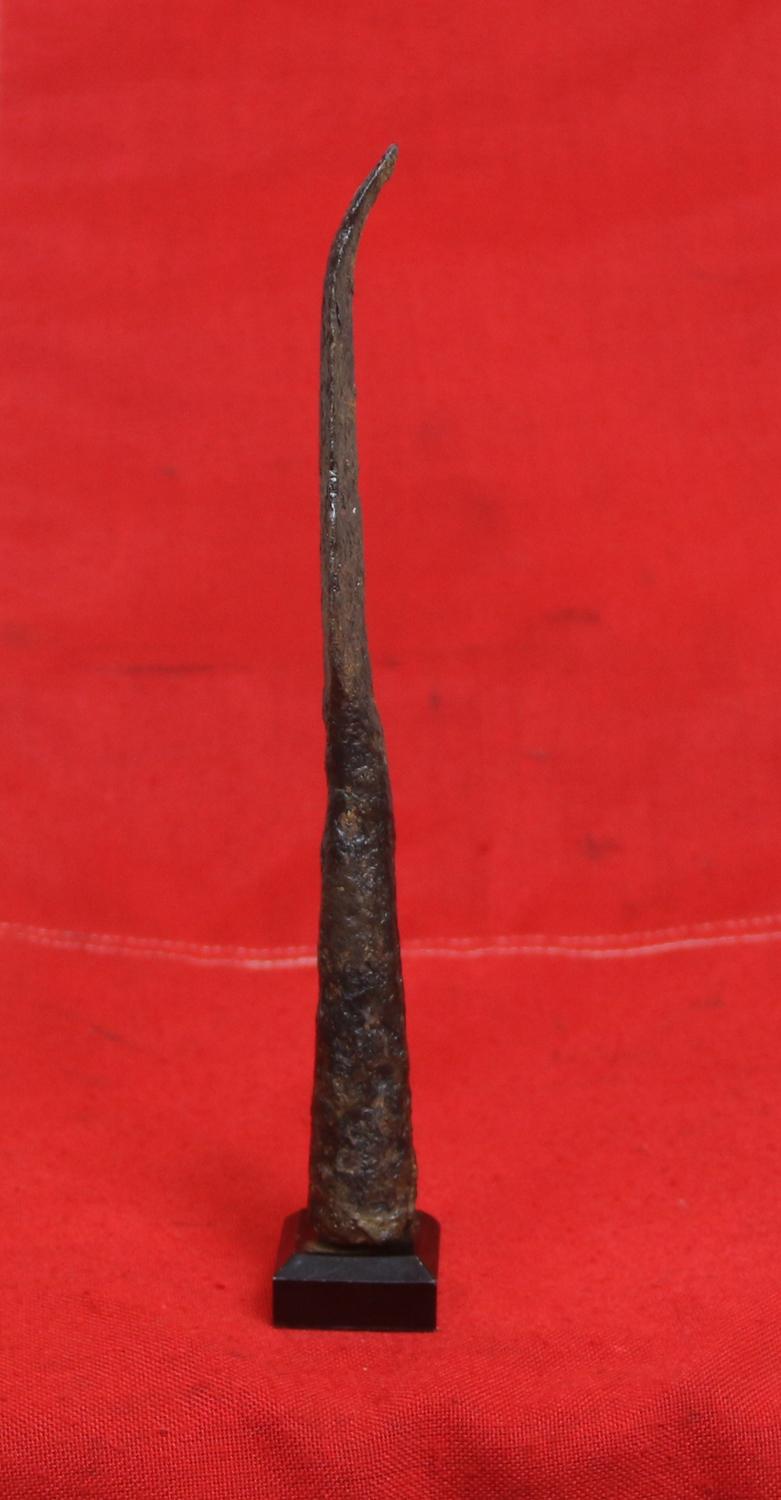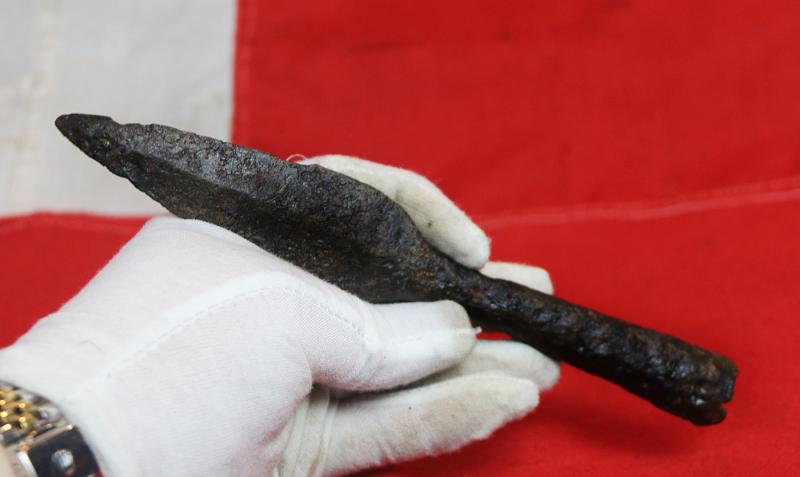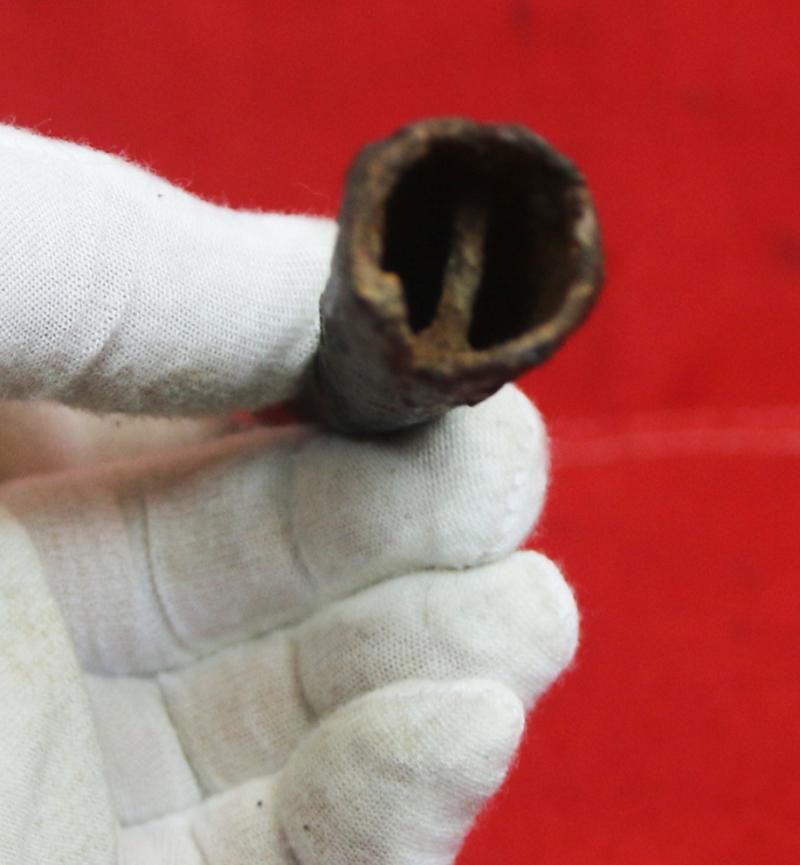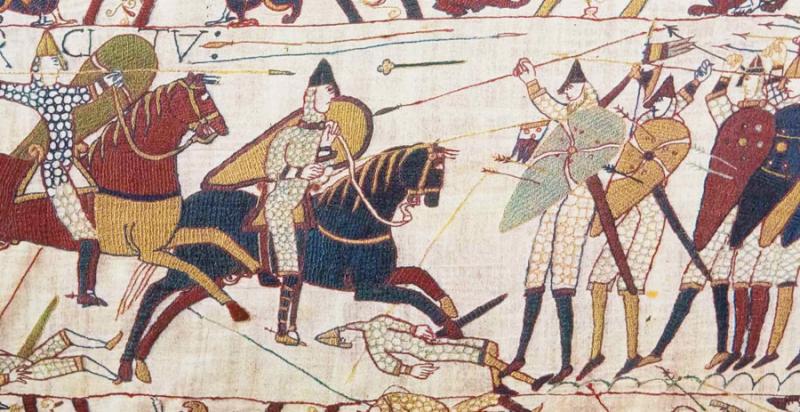A Super Original Anglo Saxon Warrior's Iron Spear from Around the Time of King Canute {Cnut} to King Harold
In good recovered condition, overall russetted, remarkably with its haft securing rivet still present, with a bent tip, which likely indicates it struck and embedded itself in a Norman or Viking shield, and was plucked out and discarded in the middle of combat.
In the summer of 1015, Cnut's fleet set sail for England with a Danish army of perhaps 10,000 in 200 longships.26 Cnut was at the head of an array of Vikings from all over Scandinavia. The invading army was composed primarily of mercenaries.27 The invasion force was to engage in often close and grisly warfare with the English for the next fourteen months. Practically all of the battles were fought against the eldest son of Æthelred, Edmund Ironside.
Harold Godwinson (c. 1022 – 14 October 1066), also called Harold II, was the last crowned Anglo-Saxon English king. Harold reigned from 6 January 10661 until his death at the Battle of Hastings, fighting the Norman invaders led by William the Conqueror during the Norman conquest of England. His death marked the end of Anglo-Saxon rule over England.
Harold Godwinson was a member of a prominent Anglo-Saxon family with ties to Cnut the Great. He became a powerful earl after the death of his father, Godwin, Earl of Wessex. After his brother-in-law, King Edward the Confessor, died without an heir on 5 January 1066, the Witenagemot convened and chose Harold to succeed him; he was probably the first English monarch to be crowned in Westminster Abbey. In late September, he successfully repelled an invasion by rival claimant Harald Hardrada of Norway in York before marching his army back south to meet William the Conqueror at Hastings two weeks later.
Viking and Anglo Saxon history is now at the forefront of interest today, especially with so many representations and depictions of the the great Viking age and often their British enemies the Anglo Saxon peoples being created into films and documentaries currently.
The interest in original Viking artefacts, and weapons of their natural foes, has never been greater than it is today. In our Brighton gallery almost all of our daily thousands of visitors make a beeline to all our amazing original Viking pieces, the interest is literally unceasing. Many are spellbound by their historical significance and almost all are surprised to be able to view up close, let alone acquire, such amazing pieces. And this fine example is one of the least expensive pieces of its type we can offer currently, and probably one of the very rarest, bearing in mind original Viking and Anglo Saxon arms and armour we can show and have had recently, can easily approach up to around £40,000 each.
The form of spear type used by Anglo Saxon warriors from the 6th century to the 11th century Norman Conquest of 1066, and the spear was of vital importance to Anglo Saxon armies. This ancient spear, is likely from the 900's The main weapon the Anglo-Saxons used during war were their spears. They were usually leaf or kite shaped and had a socket for the attachment of the staff. The usual length of the spear was 6’6”- 8’ (2.00m-2.50m). Spears were used for both hand to hand combat and as Javelins. Anglo-Saxons burials that contained weapons 86% of the time had spears in them. There were also 21 different types of spears the Anglo-Saxons used during war. The group of tribes known by the three names Saxons, Angles, and Jutes all belonged to the Teutonic stock; the Jutes perhaps being nearer akin to the Gothic and Scandinavian branch than to the German. It is doubtful whether there was any real distinction between Angles and Saxons other than the designation of the territory from which they started. The king's power
One of these customs was fighting everyone in sight. A king's power was not hereditary; it depended solely on his ability to win battles and so gain land, treasure, and slaves to give his supporters. He was obliged to fight and keep fighting. If not, he would find himself out of a job or deprived of his life, or both. Succession from father to son was never a foregone conclusion. Any relative of the old king who could muster enough support could make a bid for the throne. This helps to explain why the Anglo-Saxon kingdoms came and went so quickly. The power of any kingdom over its neighbours was only as solid as the strength of its king in battle.
King Offa
Roughly speaking, the 7th century was the age of Northumbrian ascendance, with Mercia playing second fiddle. In the 8th century these roles reversed. The most powerful and well known of the Mercian kings was Offa, who ruled from 758-796. A successful warrior (which is a given for anyone in those days who managed to hold onto power for so long), he defeated kings in Sussex, Anglia, and Wessex, proclaiming himself King of the English. In the 11th century, there were three conquests and some Anglo-Saxon people would live through it: one in the aftermath of the conquest of Cnut in 1016; the second after the unsuccessful attempt of battle of Stamford Bridge in 1066; the third after that of William of Normandy in 1066. The consequences of each conquest can only be assessed with hindsight. In 1016, no-one was to know that whatever cultural ramifications were felt then, they would be subsumed half a century later; and in 1066 there was nothing to predict that the effects of William's conquest would be any greater or more lasting than those of Cnut's. See Swanton, M.J. Spearheads of the Anglo-Saxon Settlements, London, 1973 for discussion. inches long overall Almost every iron weapon that has survived today from this era is now in a fully russetted condition, as is this one, because only the swords of kings, that have been preserved in national or Royal collections are today still in a relatively good state and condition, but usually russetted to a degree
Code: 24810

